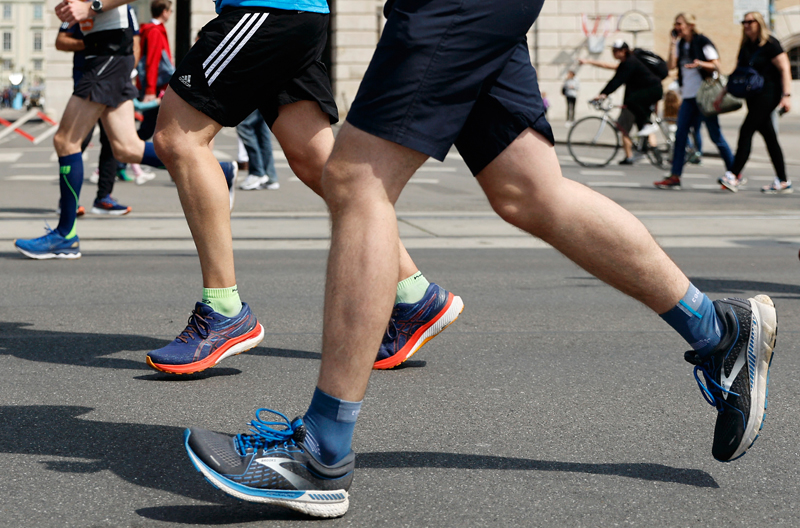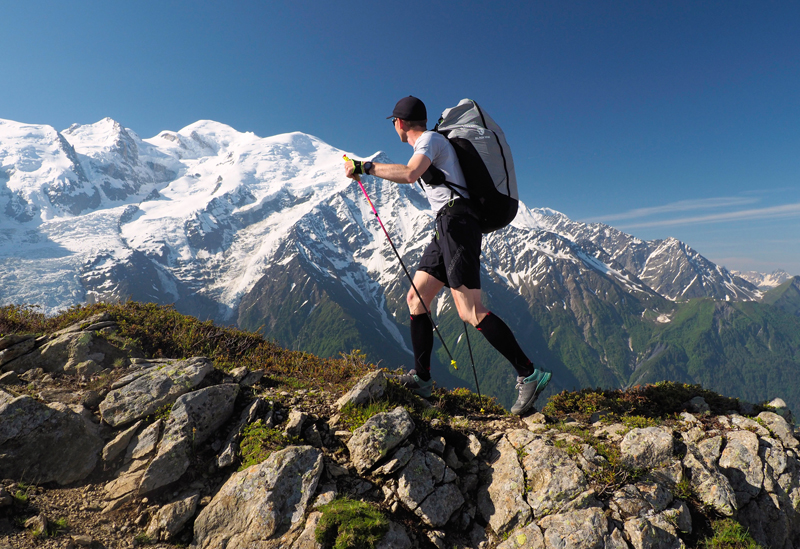Recreational running: the pronation-fatigue connection

Running as an endurance sport has many upsides. Not only is it simple, requiring minimal kit and an activity that can be performed anytime, anywhere, it’s also an extremely time efficient activity for building aerobic fitness. Unfortunately, there is a significant downside and that’s the risk of a running related injury (RRI).
Data shows that a non-elite runner, running more than five miles per week can expect a 66% chance of becoming injured in a 24-month period – even when that runner has been injury free for the previous six months(1). Moreover, more than half of those who do get injured in this period will experience more than one injury! In fact, the injury risks may be even higher; a study published very recently investigated the injury rates in 274 recreational runners with no recent injury. It found that over half (52%) experienced a running related injury in a 12-month follow-up period(2).
Pronation and foot loading
One explanation for the relatively high injury rate in (particularly recreational) runners is that running places a high loading on the muscles tendons, ligaments and bones that maintain the structure and function of the foot(3-5). One consequence of this foot loading and accumulated fatigue in these foot structures is an excessive or increased tendency to pronate excessively (see figure 1).
Pronation describes the motion of the foot and ankle following foot strike when running or walking. This motion helps absorb the impact shock of foot strike, and involves a ‘rolling inwards’, from the outside of the foot towards the inside. Viewing the motion of pronation from the rear, the heel is slightly tilted outwards (supinated) as the foot strikes the ground, but rolls inwards to a fairly neutral or slightly pronated position before push-off for the next stride (figure 1). This is why you notice more wear on the outer part of your running shoe heel as compared to the inner part because the high-impact takes place on the outer edge.
Pronation and supination in the foot and ankle during running
You need to be logged in to continue reading.
Please register for limited access or take a 30-day risk-free trial of Sports Performance Bulletin to experience the full benefits of a subscription. TAKE A RISK-FREE TRIAL
TAKE A RISK-FREE TRIAL
Newsletter Sign Up
Testimonials
Dr. Alexandra Fandetti-Robin, Back & Body Chiropractic
Elspeth Cowell MSCh DpodM SRCh HCPC reg
William Hunter, Nuffield Health
Newsletter Sign Up
Coaches Testimonials
Dr. Alexandra Fandetti-Robin, Back & Body Chiropractic
Elspeth Cowell MSCh DpodM SRCh HCPC reg
William Hunter, Nuffield Health
Keep up with latest sports science research and apply it to maximize performance
Today you have the chance to join a group of athletes, and sports coaches/trainers who all have something special in common...
They use the latest research to improve performance for themselves and their clients - both athletes and sports teams - with help from global specialists in the fields of sports science, sports medicine and sports psychology.
They do this by reading Sports Performance Bulletin, an easy-to-digest but serious-minded journal dedicated to high performance sports. SPB offers a wealth of information and insight into the latest research, in an easily-accessible and understood format, along with a wealth of practical recommendations.
*includes 3 coaching manuals
Get Inspired
All the latest techniques and approaches
Sports Performance Bulletin helps dedicated endurance athletes improve their performance. Sense-checking the latest sports science research, and sourcing evidence and case studies to support findings, Sports Performance Bulletin turns proven insights into easily digestible practical advice. Supporting athletes, coaches and professionals who wish to ensure their guidance and programmes are kept right up to date and based on credible science.









